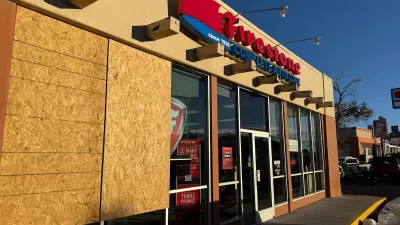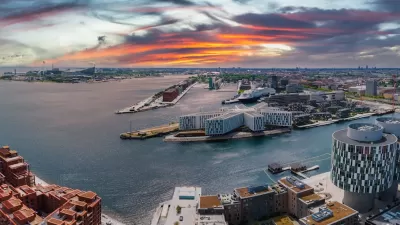Is your home historic? The Atlantic Cities challenges its readers to look at the history behind their own homes, providing a list of 10 things one can do to learn something new about the place we spend most of our time.
Was your house a safe-house on the Underground Railroad, or a former President's childhood home, or was it designed by a famous architect? Perhaps not, but Emily Rose of The Atlantic Cities gives an easy-to-use list of ten potential starting points for those looking to unravel the past of their domestic space.
Some tips are as easy as just looking around your home. "You might find dates or stamps left by the builder; different-sized bricks will tell you that the house was built in different construction cycles," writes Rose. Scrounging around the backyard and the neighborhood might also turn up some interesting clues, from old glass bottles and children's toys to the size, layout, and alignment of your own home in relation to the rest of the neighborhood. The clues could tell you about what time period or for what purpose your home was constructed.
If you want to dig deeper, researching documentation could tell you even more. Census data, title deeds, and property records can tell you information like how many people were living there in 1950, the number of children, the cost of the home, and even if the home contained a radio; all very interesting stuff for history buffs. Rose points out that the answers to some of the questions above can be tracked down at your public library or local historical societies.
So why not give it a shot?
FULL STORY: Unravel Your Home's History

Americans May Be Stuck — But Why?
Americans are moving a lot less than they once did, and that is a problem. While Yoni Applebaum, in his highly-publicized article Stuck, gets the reasons badly wrong, it's still important to ask: why are we moving so much less than before?

Using Old Oil and Gas Wells for Green Energy Storage
Penn State researchers have found that repurposing abandoned oil and gas wells for geothermal-assisted compressed-air energy storage can boost efficiency, reduce environmental risks, and support clean energy and job transitions.

Placekeeping: Setting a New Precedent for City Planners
How a preservation-based approach to redevelopment and urban design can prevent displacement and honor legacy communities.

San Francisco’s Muni Ridership Grew in 2024
The system saw its highest ridership since before the Covid-19 pandemic, but faces a severe budget shortage in the coming year.

Colorado Lawmakers Move to Protect BRT Funding
In the face of potential federal funding cuts, CDOT leaders reasserted their commitment to planned bus rapid transit projects.

Safe Streets Funding in Jeopardy
The Trump administration is specifically targeting bike infrastructure and other road safety projects in its funding cuts.
Urban Design for Planners 1: Software Tools
This six-course series explores essential urban design concepts using open source software and equips planners with the tools they need to participate fully in the urban design process.
Planning for Universal Design
Learn the tools for implementing Universal Design in planning regulations.
Heyer Gruel & Associates PA
City of Moreno Valley
Institute for Housing and Urban Development Studies (IHS)
City of Grandview
Harvard GSD Executive Education
Salt Lake City
NYU Wagner Graduate School of Public Service
City of Cambridge, Maryland





























